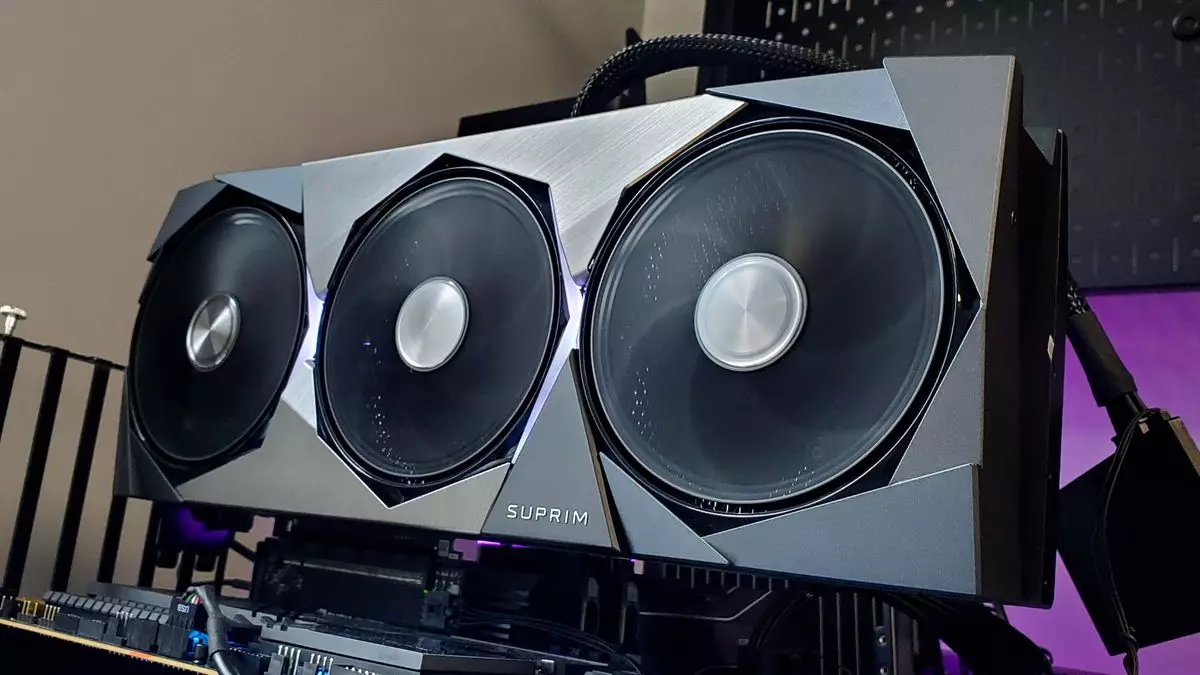In the ever-evolving landscape of graphics technology, Nvidia has found itself in a perplexing predicament with the launch of its RTX 50-series graphics cards. The term “disappointment” hardly encapsulates the public’s sentiment surrounding this release, reflecting deeper issues of stock shortages, inflated prices, and over-promised performance metrics. The recent announcement of a price reduction for these cards, particularly within Europe and the UK, feels ironically offset by the reality on the ground. It begs the question: are these adjustments genuinely beneficial, or merely window dressing in a marketplace increasingly dominated by supply chain woes and aggressive pricing tactics?
While the news of a price cut may seem like a boon for potential buyers, a closer inspection reveals a series of caveats. The reductions apply uniquely to the Founders Edition models, leaving many consumers to grapple with higher prices if they hoped for alternatives from AIB (Add-In Board) manufacturers. Moreover, there is no price adjustment for the RTX 5070 Ti, which illustrates a selective approach that might frustrate buyers hoping for a more comprehensive price overhaul. This selective reduction not only confounds expectations but also highlights a troubling disconnect between Nvidia’s MSRP ambitions and the grim realities consumers must confront when navigating the marketplace.
A Shifting Currency and Its Effects on Pricing
The explanation for these price adjustments largely revolves around changes in currency values. As detailed by VideoCardz, the decline of the US dollar has prompted Nvidia to slightly recalibrate prices in countries like Germany and the UK. Yet, this reasoning sounds eerily superficial. While it is prudent for companies to respond to currency fluctuations, what value does a minor price reduction hold if the cards themselves are virtually non-existent on store shelves? In Germany, for example, a 4.3% to 4.6% price reduction for selected models feels inconsequential next to the reality that eager consumers are thwarted at every turn by empty inventory.
Across the UK, adjusted MSRP for the RTX 50-series cards now stands at £529 for the RTX 5070, down from £539, while the RTX 5090 sits at £1,889, reduced from £1,939. However, these numbers become anecdotal when faced with the overwhelming obstacle of availability. With the RTX 5070 Ti remaining at £729 due to its absence of a Founders Edition model, we see a clear stratification in the market that leaves many consumers in the lurch. Undoubtedly, even at lower prices, the ongoing scarcity significantly diminishes any potential savings, driving some to AIB vendors who often command prices far above Nvidia’s MSRP.
The Performance Paradox and Competitive Landscape
Adding insult to injury, Nvidia’s struggles are compounded when contrasted with its primary competitor, AMD. While Nvidia appears bogged down by its operational inefficiencies, AMD has reportedly celebrated over 200,000 sales of its RX 9070 and RX 9070 XT cards. One can’t help but question how Nvidia can maintain its market dominance when its competitors seem to be bridging the gap. It’s symptomatic of a larger trend in the graphics card market: a disparity in performance claims versus actual market execution.
The rhetoric surrounding Nvidia’s performance claims often echoes promises laden with qualifiers that can easily mislead consumers. When Nvidia speaks of “strong sequential growth,” it’s hard not to feel cynical, especially when prospective buyers confront bare shelves and inflated prices from AIB vendors for sporadic stock. Convoluted sales figures and market projections lose their relevance in face of the tangible experience of purchasing—or the struggle to purchase—an RTX 50-series card.
Nvidia must also contend with broader implications of its pricing strategies. As consumers grow weary of being priced out of the market, the very essence of brand loyalty hangs in the balance. If the current situation persists, how long can Nvidia sustain its stronghold against the encroachment of competitors like AMD? The balance tips precariously on the satisfaction—or dissatisfaction—of consumers who are all too aware that what’s being offered may not align with the newly minted price tags. The Nvidia RTX 50-series launch may not just be a transient hiccup but a reflection of a deeper identity crisis that could redefine how we engage with graphics technology in the years to come.

